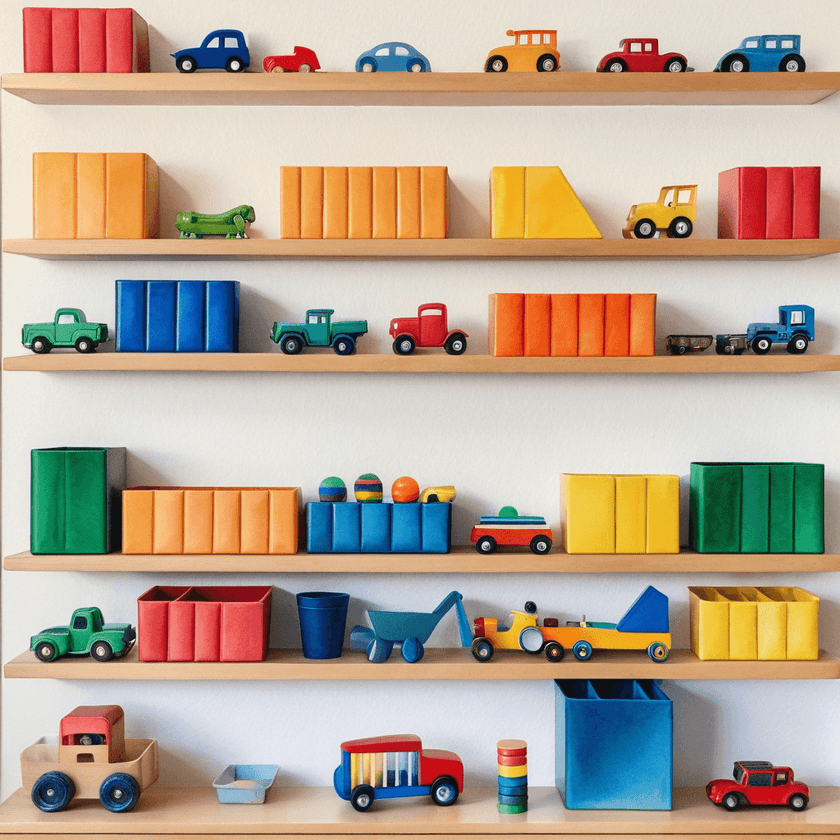Organizing and storing kids' toys can be a challenging task for many parents. With toys scattered all over the house, it can be overwhelming to keep things tidy and clutter-free. However, with some simple strategies and storage solutions, you can create a more organized and functional space for your little ones to play in. Here are some practical tips for organizing and storing kids' toys that will help you maintain order and save time.
Assess the Inventory
Before you start organizing, take stock of the toys you already have. Go through every toy and decide whether it stays or goes. Donate toys that are no longer age-appropriate, broken, or simply not played with anymore. This initial de-cluttering step will make the organization process much more manageable.
Categorize the Toys
Once you've pared down the toy collection, group similar toys together. Categorizing toys into groups such as puzzles, building blocks, action figures, and dolls will make it easier to find what you're looking for and will help your child know where each toy belongs. This can also make playtime more engaging for your child, as they can easily spot their favourite toys.
Use Clear Storage Bins
Clear storage bins are a game-changer for organizing toys. They allow you to see what's inside without having to open each one. Label each bin with a picture and word description, so your child knows exactly where to put their toys. Stackable bins can help you maximize vertical space, which is especially useful in smaller rooms.
Create Toy Zones
Designate specific areas for different types of play. For instance, create a reading nook with a bookshelf for books and a cosy chair, a craft area with supplies neatly stored, and a play area with bins for various toys. Having designated zones will help contain the mess and make it easier for your child to tidy up after playtime.
Involve Your Child
Involving your child in the organization process can be surprisingly effective. Explain the importance of keeping their toys organized and show them where each toy belongs. Make it a fun activity by turning it into a game or challenge. When children feel ownership over their space, they are more likely to keep it tidy.
Rotate Toys
To prevent toy overload, consider implementing a toy rotation system. Store half of the toys out of sight and rotate them every few weeks. This keeps the toys feeling fresh and exciting for your child, and it reduces the number of toys that need to be organized at any given time.
Use Multi-Functional Furniture
Multi-functional furniture pieces, such as a storage bench or a coffee table with built-in storage, can provide additional space for keeping toys out of sight. These pieces can blend seamlessly into your home decor while offering practical storage solutions.
Label Everything
Labels are a crucial element of any organized space. Use picture labels for younger children who can't read yet and word labels for older kids. Consistent labeling will help everyone in the household know where things belong, making it easier to maintain organization.
Install Wall Shelves
Wall shelves can be a valuable addition to your toy storage strategy. They provide extra storage space without taking up floor space. Use them to display books, stuffed animals, or decorative bins filled with smaller toys. Shelves can also add a decorative touch to your child's room.
Regularly Review and Declutter
Maintaining an organized space requires regular reassessment. Set a schedule to go through toys every few months. Remove toys that are no longer used and reorganize as needed. This ongoing process will help keep the clutter at bay and ensure that your child's play area remains functional and enjoyable.
Organizing and storing kids' toys doesn't have to be overwhelming. By taking the time to assess, categorize, and utilize smart storage solutions, you can create an organized and inviting space for your child to play and explore. Remember to involve your child in the process and to regularly reassess your storage needs. With these tips, you'll be well on your way to a clutter-free home where toys are easily accessible and quickly tidied away.



 DimpleBee.
DimpleBee.